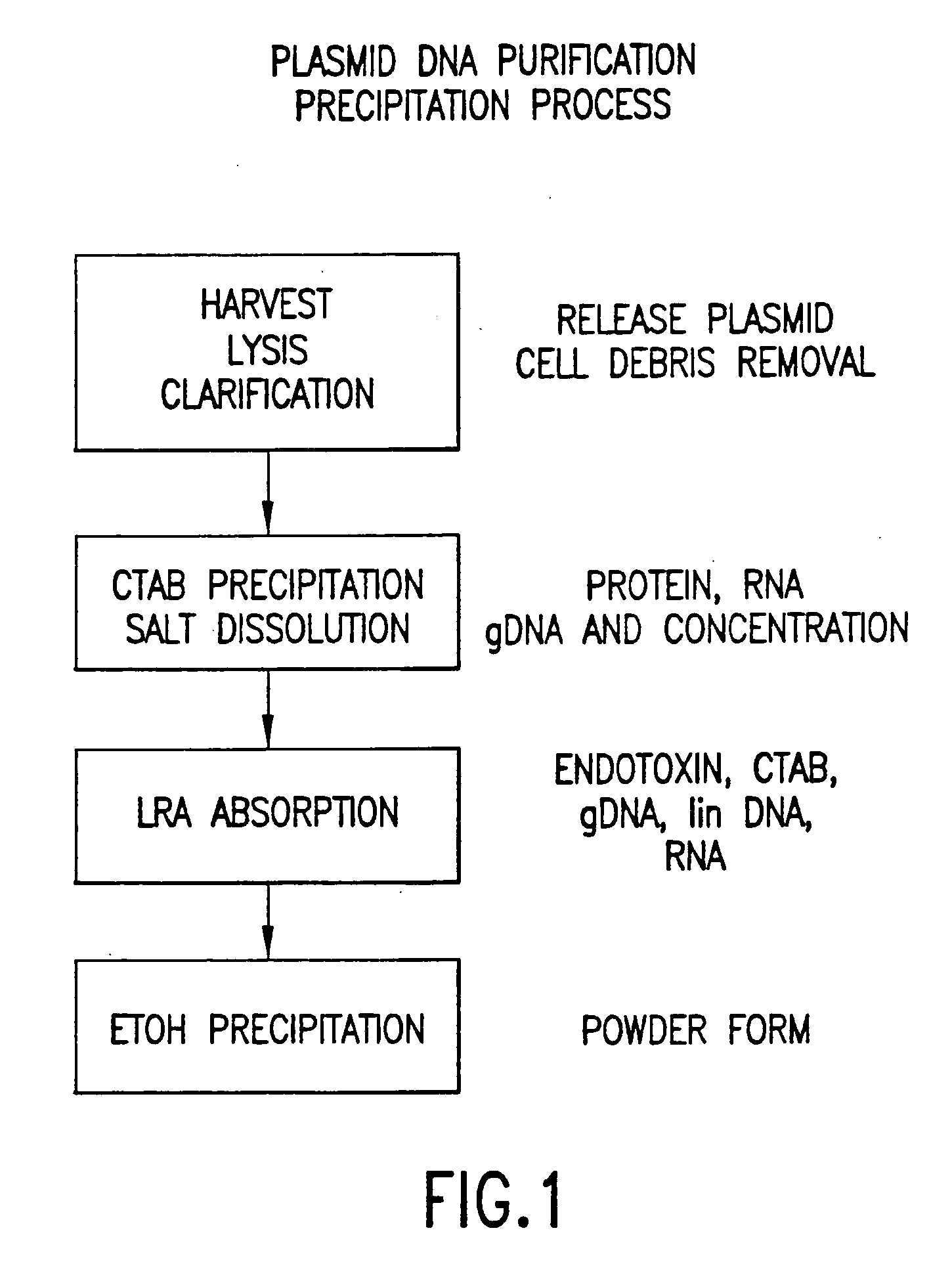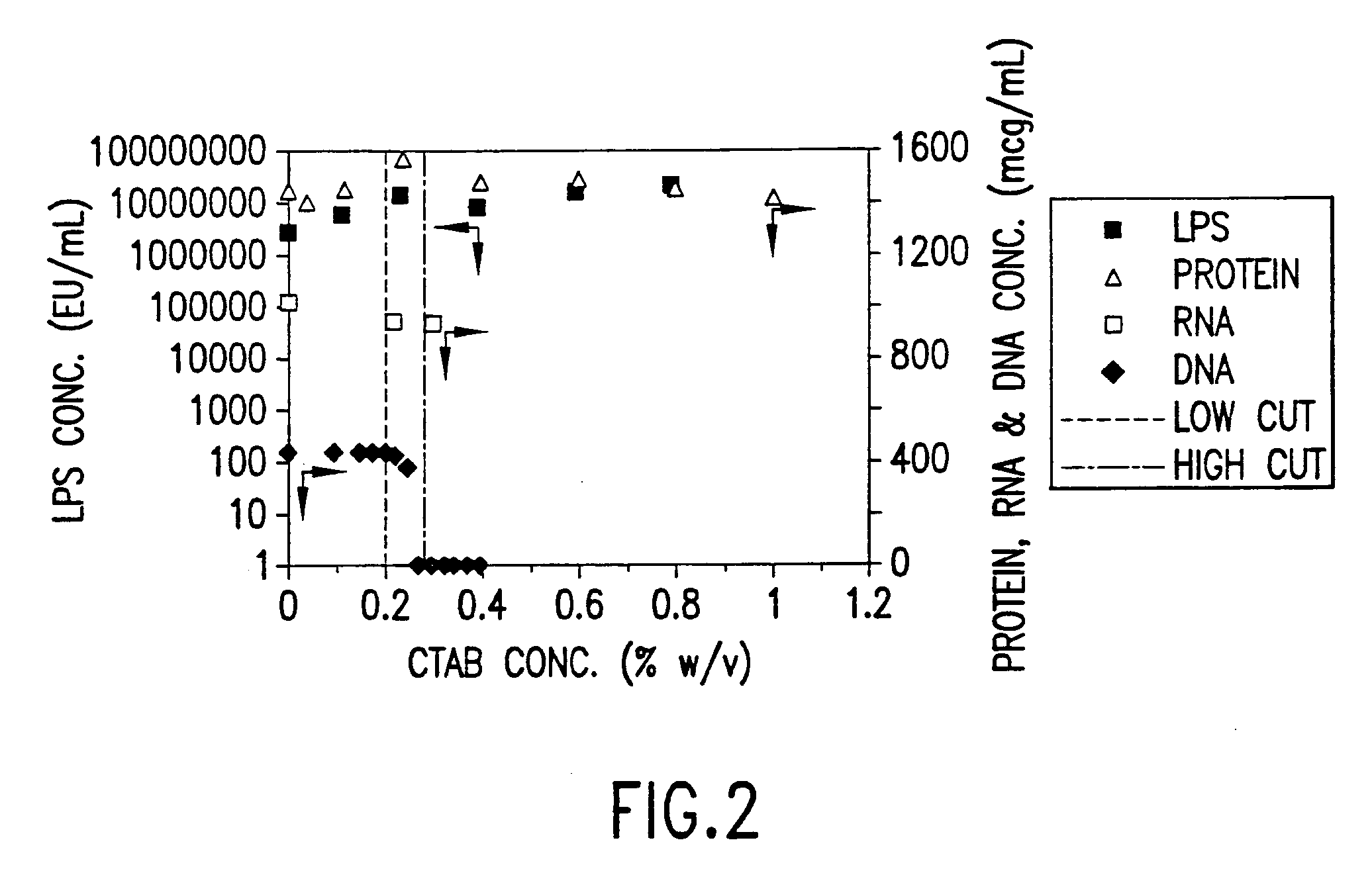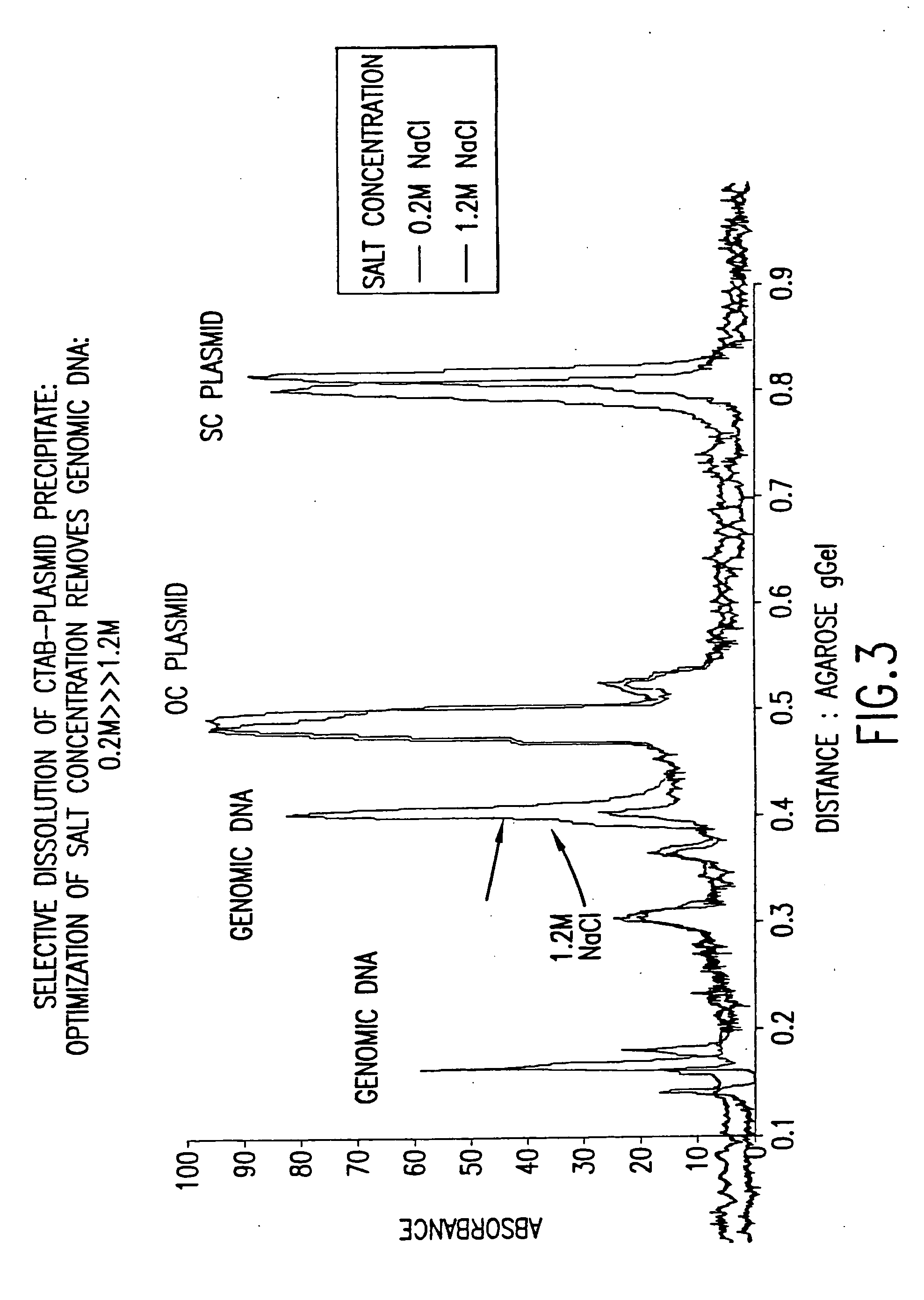Process for the scaleable purification of plasmid DNA
a plasmid dna and purification technology, applied in the field of scaleable purification of plasmid dna, can solve the problems of inability to scale up the manufacture and purification of clinical-grade plasmid dna, prohibitive cost of raw materials such as resins and buffers, and inability to teach or suggest detergent-based precipitation steps, etc., to avoid fouling problems, reduce the need for costly polymer-based chromatography resins
- Summary
- Abstract
- Description
- Claims
- Application Information
AI Technical Summary
Benefits of technology
Problems solved by technology
Method used
Image
Examples
example 1
Purification of Plasmid DNA
[0077] The following protocol for the purification of plasmid DNA from E. coli resulted in the isolation of approximately 730 mg of purified, supercoiled plasmid DNA. A schematic of the core plasmid purification process disclosed herein is shown in FIG. 1.
[0078] Cell lysis—600 mL of cell paste was thawed using warm tap water and resuspended in 5.4 L of STET buffer. The 10-fold dilution yielded a slurry with an optical density of 30 at 600 nm. 40 mcL of Ready-Lyse Lysozyme (Epicentre, 30 kU / mcL) was then added to the cell slurry. The temperature of the diluted cell slurry was raised to approximately 40° C. After 45 minutes of mixing, the cells were heat-lysed through an electro-polished, stainless steel coil immersed in a boiling water bath. The flow rate was adjusted so that the temperature of fluid exiting the heat exchanger was roughly 70° C. The lysis coil was then cleaned with pyrogen-free water, immersed in an ice water bath, and used to cool the ho...
example 2
Use of a Particle-Size Analyzer to Monitor CTAB Precipitation
[0100] CTAB precipitation may be closely monitored using, for example a Lasentec® particle-size analyzer. Residual, finely divided cell debris and other impurities, including genomic DNA and relaxed circular and linear DNA degradates are precipitated from the clarified lysate by adding a solution of 1.0% w / v CTAB in 40 mM NaCl to a final concentration of 0.25-0.28% w / v CTAB. Precipitation of the impurities is monitored in real-time using a Lasentec® particle-size analyzer. Addition of CTAB is stopped after the total particle counts drop sharply. This is just enough CTAB to precipitate linear and relaxed circular DNA while leaving the supercoiled DNA in solution. The batch is then filtered to remove the precipitated impurities. CTAB is added to the batch to a final concentration of 0.30-33% w / v CTAB to precipitate the supercoiled DNA. FIG. 5 shows precipitation of impurities by 0.25-0.30% w / v CTAB using a Lasentec® particl...
example 3
Purification of Plasmid DNA From Approximately 80 L Fermentation Broth
[0101] Table 5 summaries a pilot lot utilizing the methodology disclosed in the present invention. The lot was started by resuspending roughly 15.9 L of harvested cells in STET buffer at a 1:10 dilution. Note that 15.9 L of harvested cells translated to roughly 80 L of fermentation broth. The STET-resuspended cells were incubated for 1 hour at 37° C. with Ready-Lyse lysozyme (Epicentre) at 500 U / mL. Cells were heat-lysed following the 37° C. incubation and were immediately cooled using two heat exchangers in series. The first was used heat the cells to 70° C., and the second was used to cool the cells to roughly 20° C. Celpure P300 was mixed into the lysate at a body feed concentration of approximately 40 g / L. The resulting slurry was filtered though a 25-micron stainless steel filter cloth. Filtrate was recirculated until a clarity of <25 NTU was achieved. The filter cake was dried using pressurized air to maxim...
PUM
| Property | Measurement | Unit |
|---|---|---|
| Specific surface area | aaaaa | aaaaa |
| Surface area | aaaaa | aaaaa |
| Adsorption entropy | aaaaa | aaaaa |
Abstract
Description
Claims
Application Information
 Login to View More
Login to View More - R&D Engineer
- R&D Manager
- IP Professional
- Industry Leading Data Capabilities
- Powerful AI technology
- Patent DNA Extraction
Browse by: Latest US Patents, China's latest patents, Technical Efficacy Thesaurus, Application Domain, Technology Topic, Popular Technical Reports.
© 2024 PatSnap. All rights reserved.Legal|Privacy policy|Modern Slavery Act Transparency Statement|Sitemap|About US| Contact US: help@patsnap.com










